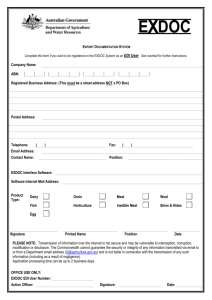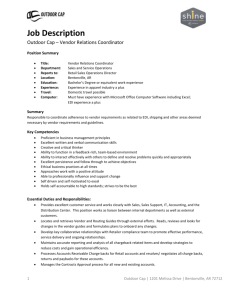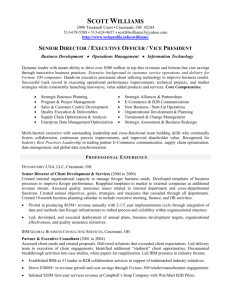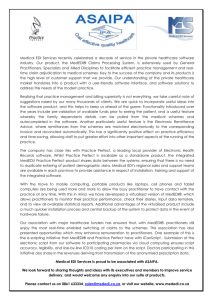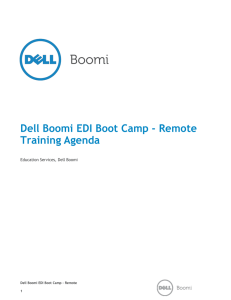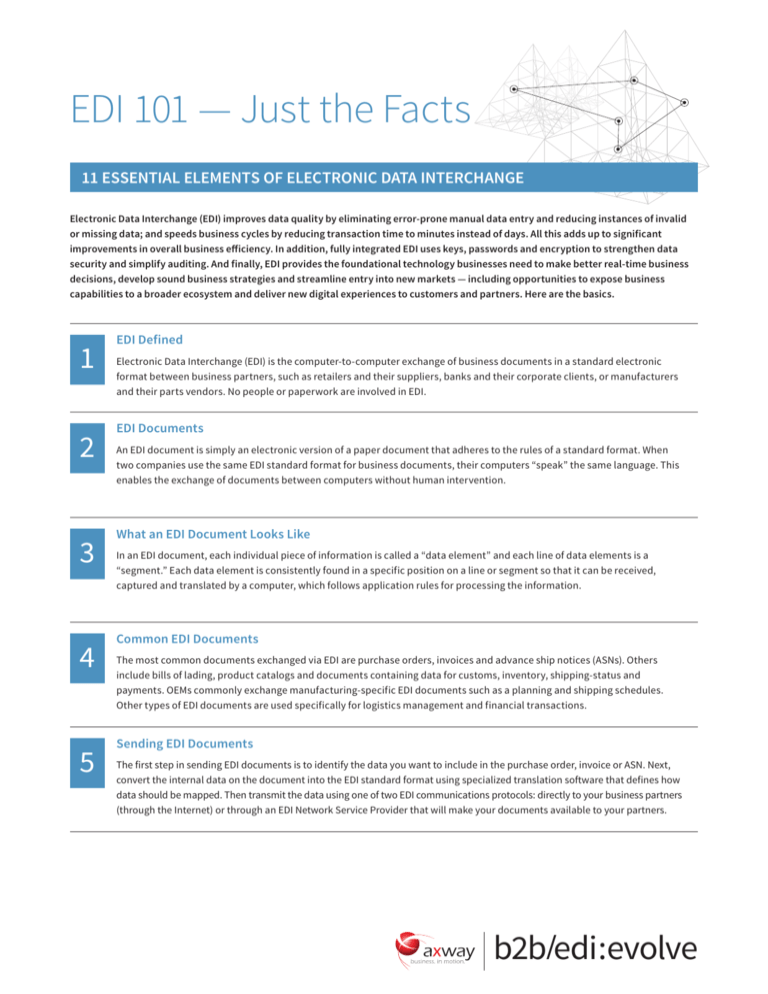
EDI 101 — Just the Facts
11 ESSENTIAL ELEMENTS OF ELECTRONIC DATA INTERCHANGE
Electronic Data Interchange (EDI) improves data quality by eliminating error-prone manual data entry and reducing instances of invalid
or missing data; and speeds business cycles by reducing transaction time to minutes instead of days. All this adds up to significant
improvements in overall business efficiency. In addition, fully integrated EDI uses keys, passwords and encryption to strengthen data
security and simplify auditing. And finally, EDI provides the foundational technology businesses need to make better real-time business
decisions, develop sound business strategies and streamline entry into new markets — including opportunities to expose business
capabilities to a broader ecosystem and deliver new digital experiences to customers and partners. Here are the basics.
1
2
3
4
5
EDI Defined
Electronic Data Interchange (EDI) is the computer-to-computer exchange of business documents in a standard electronic
format between business partners, such as retailers and their suppliers, banks and their corporate clients, or manufacturers
and their parts vendors. No people or paperwork are involved in EDI.
EDI Documents
An EDI document is simply an electronic version of a paper document that adheres to the rules of a standard format. When
two companies use the same EDI standard format for business documents, their computers “speak” the same language. This
enables the exchange of documents between computers without human intervention.
What an EDI Document Looks Like
In an EDI document, each individual piece of information is called a “data element” and each line of data elements is a
“segment.” Each data element is consistently found in a specific position on a line or segment so that it can be received,
captured and translated by a computer, which follows application rules for processing the information.
Common EDI Documents
The most common documents exchanged via EDI are purchase orders, invoices and advance ship notices (ASNs). Others
include bills of lading, product catalogs and documents containing data for customs, inventory, shipping-status and
payments. OEMs commonly exchange manufacturing-specific EDI documents such as a planning and shipping schedules.
Other types of EDI documents are used specifically for logistics management and financial transactions.
Sending EDI Documents
The first step in sending EDI documents is to identify the data you want to include in the purchase order, invoice or ASN. Next,
convert the internal data on the document into the EDI standard format using specialized translation software that defines how
data should be mapped. Then transmit the data using one of two EDI communications protocols: directly to your business partners
(through the Internet) or through an EDI Network Service Provider that will make your documents available to your partners.
b2b edi:evolve
6
7
8
9
10
11
Receiving EDI Documents
Receiving an EDI document is basically the reverse of sending. You receive it, either directly from your partners or using an
EDI Network Service Provider, then translate the data from the incoming document into your internal system’s format using
specialized software. Your computer application can then automatically feed the translated data into your management systems
for immediate processing.
What are EDI Standards?
EDI standards provide a common data format that enables computers to communicate information. Common EDI standards
include ANSI X12, used in North America, and EDIFACT, which is most commonly used outside the U.S. Other standards
include SWIFT for banking and RosettaNet for high tech. Subsets of these standards, such as VICS and EANCOM, have been
developed to meet the special requirements of certain industries.
Communications Protocols
These are the rules that govern the format and transmission of data between computers. There are essentially two connection
models — direct and network. In the direct connection approach, you and your partners connect directly via the Internet using
the same communications protocol. This approach is most often used by large corporations that exchange a high volume of EDI
documents. Using the EDI Network Service Provider model, you have just a single connection to your provider for all your EDI
transactions and trading partners. This approach shields you from having to support multiple communications protocols.
Factors for Choosing the Right Protocol
There are five key factors to consider when selecting the best communications protocol for your company. First, data security
— how well will it keep your data safe from hackers? Second, repudiation — this capability authenticates whether an entity
sending you a document is legitimate. Third, message management — it’s how you know that your partner has received your
transmission. Fourth, ease of setup and use — a key factor especially if you have limited resources to install and monitor
a protocol’s day-to-day operation. And finally, interoperability — you and your partners need a protocol that will enable
everyone to communicate with each other.
What Business Processes Benefit from EDI?
EDI can help streamline three common business processes — procurement, shipping & receiving, and invoicing & payment.
In the procurement process, the buyer transmits an EDI purchase order to the supplier, who sends a purchase order
acknowledgment back to the buyer. If the supplier can’t deliver, a buyer can react much faster than without EDI. For shipping
& receiving, EDI enables timely and accurate shipment of goods to meet changing buyer requirements. This is important to
manufacturers in a Just-in-Time (JIT) environment and to retailers relying on continuous product replenishment).
Implementing an EDI Program
To implement an EDI program, you can do it yourself, outsource it to a B2B managed services provider, or use a combination
of both approaches. Doing it yourself entails numerous development steps before you can implement the solution, roll it out
to your trading community, then manage and maintain the program. The DIY model is feasible only if you have the available
resources and expertise. Otherwise, outsourcing to a B2B managed services provider is a better approach. The provider handles
integration with in-house systems, connectivity, data translation, partner integration, rollout and reporting. Hardware and
software upgrades are handled by the provider.
Already EDI-enabled? Then it’s time to evolve to the next level and gain a competitive edge by combining EDI and API into a single,
integrated data exchange solution. To learn more, download the white paper, “B2B 360°: A Revolution in EDI and API Integration.”
www.axway.com
© AXWAY 2015. ALL RIGHTS RESERVED. B2B_FACT_SHEET_EDI_BASICS_AXW_EN_110915
b2b edi:evolve


